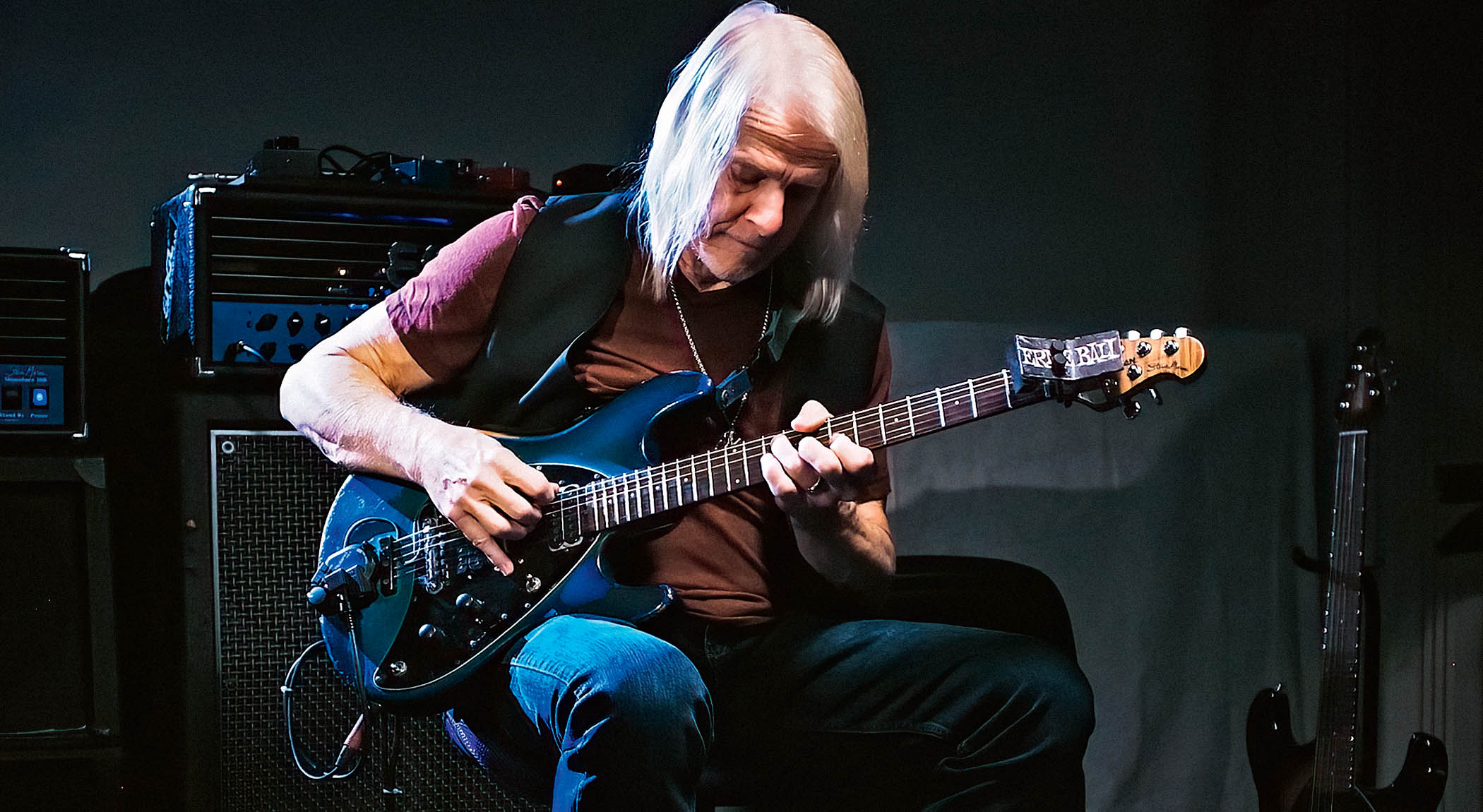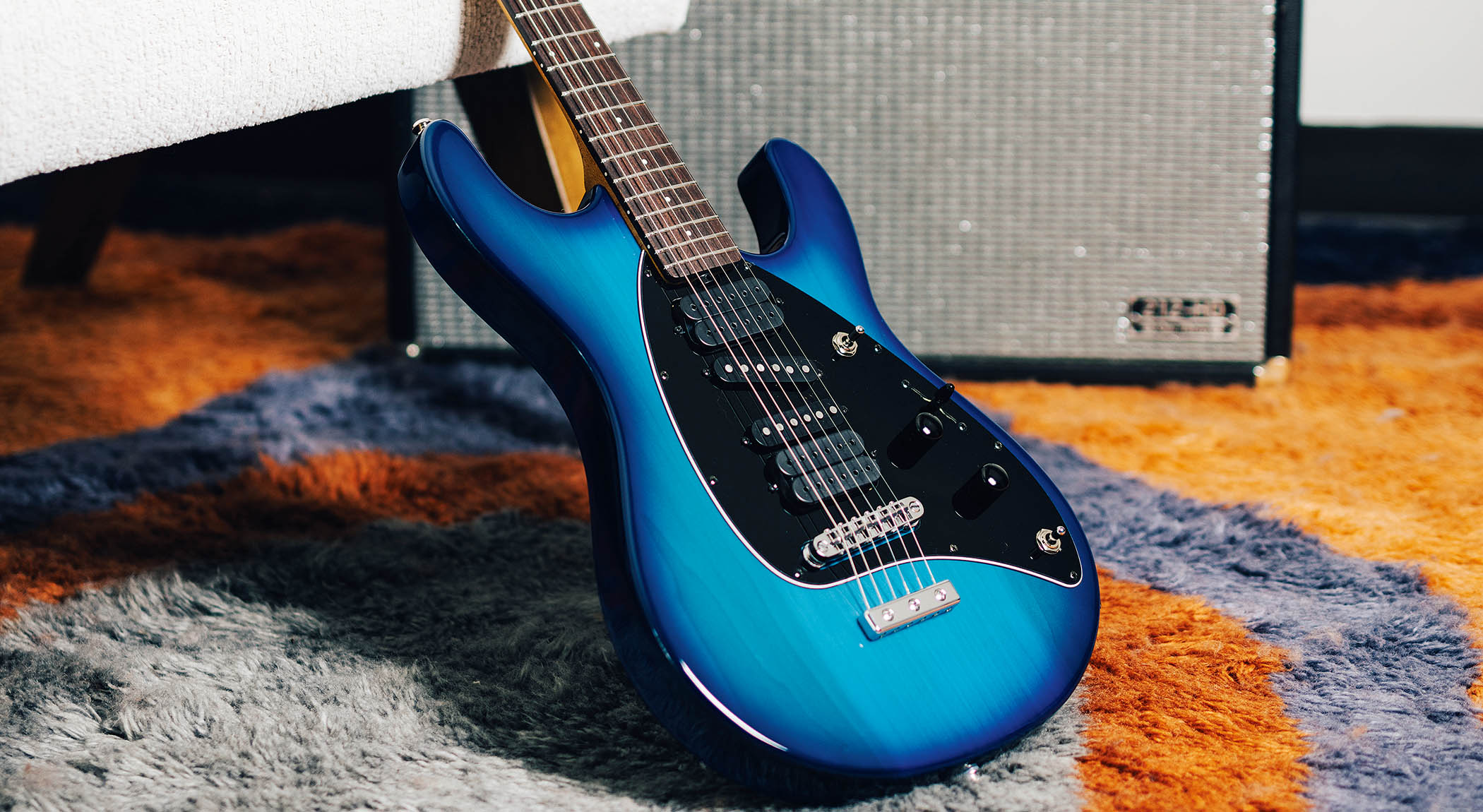“My custom-made classical guitar with the synth module was stolen while we were on tour. I got it back thanks to some people who worked with Joe Bonamassa”: Steve Morse on gear-buying, his ‘FrankenTele’ and why he needs four pickups – no more, no less
A gearhead through and through, the Dixie Dregs and ex-Deep Purple guitarist reveals some of his follies and lessons learned along the way

This month in Bought & Sold, the venerable rock guitar legend Steve Morse checks in to discuss his greatest gear hits and misses over the years.
The former Deep Purple guitarist (it still takes a bit of getting used to saying that) might not be a collector, but he knows exactly what he wants from the instrument – which is why his Ernie Ball Music Man signature guitar has four pickups. It’s a radical design, but as he explains here, everything – yes, including that neck pickup – is in its right place.
But we start as we always do, with his first good guitar. Like many of us, that’s when things got serious…
What was the first serious guitar you bought with your own money?
“The first serious guitar I bought with my own money was a new sunburst Strat in 1967. I later took the neck off that one, put it on a Tele, and ended up with humbuckers and single-coil pickups – my ‘FrankenTele’. The pickup layout became the starting point of my [Steve Morse signature] Music Man guitars.”
What was the last guitar you bought and why?
“The last guitar I bought was a Godin classical. The reason was that my custom-made Buscarino classical guitar, with the Roland synth module built in, was stolen while we were on tour.”
Get The Pick Newsletter
All the latest guitar news, interviews, lessons, reviews, deals and more, direct to your inbox!
“I needed something quick to do the duets and nylon-string stuff – the quiet moments of the [Dixie] Dregs set. The Godin was a nice guitar, but I sold it to a fan as soon as I got my Buscarino back.
“And yes, I got it back, thanks to some people who worked with Joe Bonamassa. They somehow had contact with the guy and talked him into returning it anonymously.”
What’s the most incredible find or bargain you’ve ever had when buying guitars?
“The most incredible find I’ve ever had was buying a handmade classical guitar in Miami in 1971. The builder needed money. I was a broke student, and with the warning that the finishing was not complete, I bought it.
“I also never finished it because I was too busy playing it every single day to learn my studies at the University of Miami. It has a cloudy hand-rubbed finish and one crack, I think, but it’s a big part of my early history.”

What’s the strongest case of buyer’s remorse you’ve ever had after buying gear?
“The strongest case of buyer’s remorse I ever had was when I traded an ES-335 for a ‘Black Beauty’ Les Paul. I couldn’t grab the strings to bend since the frets were so low, as it was probably meant for jazz players.
“It sounded decent, but since I couldn’t play it I traded it away in 1972. I didn’t know I could’ve just had it refretted – I was a teenager. But ergonomically, the Les Paul setup didn’t fit me anyway.”
Have you ever sold a guitar that you now intensely regret letting go?
“The one guitar I’ve intensely regretted selling was a Ramírez, which I didn’t like at the time due to tuning issues.
My best guitar-buying tip is to make a deal that’s good and fair to both parties. Basically, then you’re starting your ownership on a good karma footing
“Much later, I learned that there are ways of cutting the nut and bridge to lessen those issues, as well as trying different gauges of strings at the crossover point between plain and wound strings.”
What’s your best guitar-buying tip?
“My best guitar-buying tip is to make a deal that’s good and fair to both parties. Basically, then you’re starting your ownership on a good karma footing. Guitars are super important, but ultimately they are the least expensive thing you need to pay for if you count how many years they last.
“I’m not a collector, so I don’t have any tips, except I love it when real collectors make a find that an elderly person has in their closet and offer them more than the owner wanted because they know how valuable the instrument is nowadays.”
When was the last time you stopped and looked in a guitar shop window or browsed online, and what were you looking at?
“The last time I was window shopping was really at the NAMM Show. Every year, somebody has a new type of accessory, guitar electronic, folding guitar or different body material. In particular, I’m always curious about folding guitars for minimalist travel practice.
“In reality, I designed my Music Man to fit in the overhead bin of small aircraft and be carried into a three-quarter-size gigbag, so it’s very easy to carry aboard a plane, so I don’t really need the folding guitar, but I love the ingenuity people have shown.
“Also, the adjusted frets to give better tuning temperament, the various tuning improving bridges, and so on. In the end, in order to know I’ve got the best compromise on my Music Man, I need to keep up with what’s around to see the advantages and disadvantages of various mods.”
If forced to make a choice, would you rather buy a really good electric guitar and a cheap amp, or a cheap guitar and a top-notch high-end guitar amp?
The amp is a big part of things, but the guitar is the biggest. That is partly because some cheap amps sound like 80 per cent as good as a great amp
“Man, that’s a tough one, but the guitar wins. I need to have various tones coming straight from the instrument. The amp is a big part of things, but the guitar is the biggest. That is partly because some cheap amps sound like 80 per cent as good as a great amp. But most guitars that are cheap can’t do anything like the range of sounds on my guitar.”
If you could only use humbuckers or single coils for the rest of your career, which would it be and why?
“Humbuckers. They are versatile in that you can play with the series wiring and pick off a coil to give you that single-coil type of sound, too. The actual hum rejection part of the design helps me stay sane when I’m in buildings with real RF problems; I simply always park my setting on a humbucker during a quiet part, even if I use the single coils during the song. I prefer the basic single coil to the stacked single coils in my applications.”
“It all starts with the guitar: my Music Man signature with four pickups – plus, usually, a Roland synth pickup GK-2. This guitar gives me control over volume and tone and allows me to bring down the gain and boost the high-end back up as I do so by selecting one of my single-coil pickups mounted further from the strings.
The neck pickup is designed to be in the exact spot it’s mounted, which keeps the guitar down to a 22-fret fingerboard – but there is that all‑important fatness in the neck pickup as a result
“The neck pickup is designed to be in the exact spot it’s mounted, which keeps the guitar down to a 22-fret fingerboard – but there is that all‑important fatness in the neck pickup as a result.
“I plug straight into a TC Electronic PolyTune Mini, and from that into my trusty Keeley Compressor. From there, it’s straight back to my Engl 100-watt signature amp. Channel 1 is a beautiful clean channel that can be driven hard to warm up smoothly or, with normal gain, is clean enough to run my Buscarino electric classical guitar into it without distortion.
“Channel 2 is the bread-and-butter rock sound. Channel 3 has the most midrange control knobs and can be used to make a solo ‘pop’ out in the mix without having any more noticeable level on the VU meters on the mixing board.”
Andrew Daly is an iced-coffee-addicted, oddball Telecaster-playing, alfredo pasta-loving journalist from Long Island, NY, who, in addition to being a contributing writer for Guitar World, scribes for Bass Player, Guitar Player, Guitarist, and MusicRadar. Andrew has interviewed favorites like Ace Frehley, Johnny Marr, Vito Bratta, Bruce Kulick, Joe Perry, Brad Whitford, Tom Morello, Rich Robinson, and Paul Stanley, while his all-time favorite (rhythm player), Keith Richards, continues to elude him.
“Even the thought that Clapton might have seen a few seconds of my video feels surreal. But I’m truly honored”: Eric Clapton names Japanese neo-soul guitarist as one to watch
“You better be ready to prove it’s something you can do”: Giacomo Turra got exposed – but real guitar virtuosos are being wrongly accused of fakery, too















